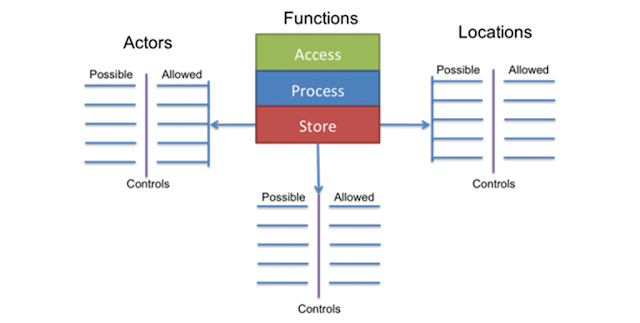Twitter Feed
2018 AT&T Business Summit: Security “in” and “of” the Cloud
While public cloud is undoubtedly an outsized piece of the conversation, news headlines of the latest data breach can make this move a very frightening proposition. The question of how…
My Brush with Royalty: Queen Latifah
Queen Latifah! Hip Hop Icon. Movie Star. Television Star. Fashion Model. Songwriter. Producer. Entrepreneurial Genius!? YES! Dana Elaine Owens, her given name, is co-owner of Flavor Unit Entertainment, a firm that includes…
What’s New in Puppet 5?
Puppet 5 is released and comes with several exciting enhancements and features that promise to make configuration management much more streamlined. This article will take a comprehensive look at these…
5 Reasons Why Ansible is the Best CM Tool Out There?
Amidst volatile markets, dynamic technology shifts, and ever-increasing customer demands, it is imperative for IT organizations to develop flexible, scalable and high-quality applications that exceed expectations and enhance productivity. A…
Machine learning APIs for Google Cloud Platform
Google Cloud Platform (GCP) is considered to be one of the Big 3 cloud platforms among Microsoft Azure and AWS. GCP is widely used cloud solutions supporting AI capabilities to design and…
What Is The Most Important Part of Architecture?
I always find it interesting to hear what people view architecture as. A lot of people think it’s just about the design aspect, where you get to put pen to…
Cloud migration best practice Part 4: Executing the migration
This series has stepped through cloud migration best practices. After providing an overview, we discussed: Classifying business-critical data. Updating organizational IT governance policies. Application screening and cloud workload selection. How to…
Cloud Migration Best Practice Part 3: Application Portfolio Analysis
In part three of this series on cloud migration best practice, I will focus on migrating the application itself. If you haven’t had the opportunity to read our recommendations from part…
Why Use Immutable Storage?
Data has become a global currency, and its value has nowhere to go but up. According to The Economist online, the world’s most valuable resource is no longer oil, but…
CLOUD ACT: What Does That Mean for Your Cloud Storage
When Congress names a law after you, it’s getting serious. That is where we are now with cloud computing. The Clarifying Lawful Overseas Use of Data Act or CLOUD Act (H.R. 4943) is…
According to the National Institute of Standards and Technology:
“Cloud computing is a model for enabling ubiquitous, convenient, on-demand network access to a shared pool of configurable computing resources (e.g., networks, servers, storage, applications and services) that can be rapidly provisioned and released with minimal management.”
While this definition is broadly accepted and has, in fact, been my adopted standard for years, it only describes technical aspects of cloud computing.
The amalgamation of technologies used to deliver cloud services is not even half the story. Above all else, the successful employment requires a tight linkage to the economic and business models of the enterprise. Critical components for any transition to cloud include:
- Enterprise economic model
- Organizational goals (financial and operational)
- Enterprise operational model
- Relevant operational processes
- Relevant operational resources
- Process relevant data
- Data classification (e.g. severity of enterprise damage if the data is used improperly)
- Risk identification and management
- Security controls
- Process automation
Taking all of these components in total, cloud computing is a business model for propelling an enterprise towards its economic and operational goals. This is why cloud computing transitions cannot be left as a task for the information technology team.
The most central aspect of any business is data because data is the fuel for all business processes. The custodian of this data is the business owner. The technical aspects of cloud computing are only tools for the provisioning, manipulating and storing of data. Decisions on all aspects of any cloud computing deployment must therefore be purposely driven by business process owners. The IT Team acts as the trusted technology advisor to and the technology execution arm of the business process owners. On the flip side, the business process owner must act as the trusted business advisor to and business execution arm of the IT Team. This defines why collaboration is essential in the delivery of a cloud computing solution. It also explains why the object of this collaboration must be business data.
Data-centric collaboration explicitly addresses how an organization handles each business data-type throughout its lifecycle. In recommending industry best practices for security, the International Information System Security Certification Consortium, would recommend the use of the data security lifecycle:
- Create: The generation of new digital content or the alteration/updating/modifying of existing content. This phase can happen internally in the cloud or externally and then the data is imported into the cloud. The creation phase where data classification and encryption is implemented. During this lifecycle phase, data can be vulnerable to attackers if access control list are not well implemented or enforced. Correct threat scanning processes and data classification are also critical.
- Store: The act of committing digital data to a storage repository typically occurs nearly simultaneously with creation. Controls such as encryption, access policy and backups should be implemented to avoid data threats.
- Use: Data is viewed, processed, or otherwise used in some sort of activity, not including modification. Data in use is most vulnerable because it is might be transported into unsecure location. Controls such as DLP (digital loss prevention), IRM (information rights management) and database and file access monitors should be implemented in order to audit data access and prevent unauthorized access.
- Share: Information is made accessible to others. Not all data should be shared, and not all sharing should present a threat. Since shared data is no longer in control of the organization, this is a very challenging phase to perform securely. Technologies such as DLP can be used to detect unauthorized sharing, and IRM technologies can be used to maintain control over the information.
- Archive: Data leaves active use and enters long-term storage. Cost vs. availability trades based on business considerations must drive data access procedures. Regulatory requirements must also be addressed.
- Destroy: The data is removed from the cloud provider. Destruction options are driven by usage, data content and applications. Data destruction can mean logical erase of pointers or permanently data destruction using physical or digital means.
The handling of each datatype should also be defined in terms of:
- The actors that potentially have access to the data;
- Potential locations for the data;
- The types of security controls present in each potential location; and
Allowable functions in each potential location include:
- Access: View/access the data, including copying, file transfers, and other exchanges of information;
- Process: Perform a transaction on the data: update it, use it in a business processing transaction, etc.; and
- Store: Store the data (in a file, database, etc.).
The data-centric approach is crucial as more enterprises adopt the hybrid cloud model. According to Gartner, nearly half of all large enterprises will have hybrid cloud deployments by the end of 2017. Dell, in fact, lists security and management as one of five essential consideration for hybrid cloud saying that, “Customers can now manage their own encryption keys when using a public cloud data store, and vendors like Dropbox, OneDrive and others can integrate with IT systems so that data is transparently encrypted on its way from users’ workstations to public cloud services without any additional steps on the part of the end user.”
A data-centric business model abandons the typical infrastructure-centric security model by adopting an explicit assumption that the IT infrastructure cannot be trusted to protect business data. Embedded in that assumption are also requirements for the encryption of all data-at-rest, data-in-motion and, if possible, data-in-use. An effective transition to cloud computing demands the adoption of a data-centric business model and the equally important broad use of encryption technologies.
This post was written as part of the Dell Insight Partners program, which provides news and analysis about the evolving world of tech. Dell sponsored this article, but the opinions are my own and don’t necessarily represent Dell’s positions or strategies.
( Thank you. If you enjoyed this article, get free updates by email or RSS – © Copyright Kevin L. Jackson 2015)
Cloud Computing
- CPUcoin Expands CPU/GPU Power Sharing with Cudo Ventures Enterprise Network Partnership
- CPUcoin Expands CPU/GPU Power Sharing with Cudo Ventures Enterprise Network Partnership
- Route1 Announces Q2 2019 Financial Results
- CPUcoin Expands CPU/GPU Power Sharing with Cudo Ventures Enterprise Network Partnership
- ChannelAdvisor to Present at the D.A. Davidson 18th Annual Technology Conference
Cybersecurity
- Route1 Announces Q2 2019 Financial Results
- FIRST US BANCSHARES, INC. DECLARES CASH DIVIDEND
- Business Continuity Management Planning Solution Market is Expected to Grow ~ US$ 1.6 Bn by the end of 2029 - PMR
- Atos delivers Quantum-Learning-as-a-Service to Xofia to enable artificial intelligence solutions
- New Ares IoT Botnet discovered on Android OS based Set-Top Boxes







